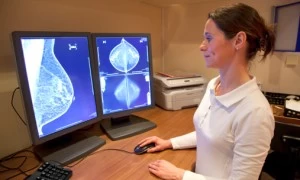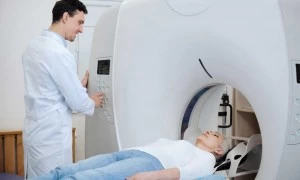
How long does an MRI take?
Getting an MRI (which stands for magnetic resonance imaging) probably doesn’t top your list of ways to spend your free time, unless you enjoy lying completely still in a tube that makes loud and mystifying noises.
Unfortunately, there are times when an MRI is a necessary step in accurately diagnosing an injury or illness. In that case, you will need to spend some quality time inside a machine that lets doctors see what’s going on inside your body. If that thought sends shivers down your spine, there’s some good news: MRIs aren’t as scary as they seem.
In case you’re not familiar with the exam, an MRI uses a magnetic field and radio waves to make detailed pictures of the inside of your body
When you’re inside an MRI machine, its magnetic field temporarily realigns the protons in your body. Radio waves make these protons create very faint signals—and those are used to make cross-sectional images. Those images are layered on top of each other to give radiologists a really good view of the inside of your body that they can see from different angles.
Healthcare providers will often turn to an MRI when they suspect you have an injury or illness that an X-ray, CT scan, or ultrasound is not able to capture. MRI’s provide excellent anatomical detail of the soft tissues, including disk abnormalities in the spine, joint problems, tumors in various organs like your breasts and kidneys, structural problems in your heart and brain injuries.
There is typically very little pre-appointment prep that you will need prior to your MRI.
In most instances, you will arrive at your appointment to have your MRI without any specific prep. If you’re undergoing a pelvic or abdominal MRI, you may be asked to avoid eating or drinking for a few hours beforehand.
The most important thing to ensure prior to having an MRI is that you do not have any metal on or in your body. The machine is a very strong magnet, and metals can cause problems.
It’s also important to tell your healthcare provider if you are pregnant or think you may be pregnant. Medical experts don’t understand the effects of magnetic fields on fetuses, and your provider may recommend using an alternative test or postponing the MRI until after you give birth.
Once you arrive at the appointment, you’ll need to remove all metal you might be wearing, like rings, earrings, or glasses and fill out a checklist to make sure you don’t have metal inside your body, such as an artificial heart valve, pacemaker, or cochlear implants.
Depending on why you’re having your MRI, you may need an injection of a contrasting agent.
In some cases, your doctor will order an MRI with contrast, which means you’ll be injected with a contrasting agent like gadolinium right before your MRI. Gadolinium lights up when you get a scan and can help radiologists get a better look at your brain, heart, and blood vessels. This can aid them in making a diagnosis of cancer or an inflammatory condition like multiple sclerosis.
If you’re nervous about having an MRI with contrast, talk to your healthcare provider about why they requested this particular test and whether you have other options.
Once you change into a gown, it’s time to get into the MRI machine.
The machine will typically be long and tube-shaped with one or two open ends. Wide Bore MRI machines may not be closed on the sides or will have a much shorter tube length. An MRI technician will ask you to lie down on a table and will provide you with a headset that will allow for communication during the MRI scan between you and the technologist.
When it’s time for your test to begin, the technician will go behind a partition and the platform you’re lying on will move into the MRI machine. The table you’re on might move you around to allow for better imaging, but you’ll typically need to keep your body as motionless as possible during your exam.
How long will the MRI take to complete?
While there’s some variation depending on your injury or illness, an MRI will typically take 15 to 20 minutes to complete with a few exams lasting up to an hour.
During your MRI, you’ll hear loud noises like thumping and tapping as the machine goes to work. The MRI technician may also be able to play music through the headset you’re wearing, so you can ask if this is a possibility when setting up your scan.
If you are claustrophobic, talk with your healthcare provider to see if you are a candidate for sedation, anesthesia, or an anti-anxiety drug they can prescribe for you to take beforehand. You will have a “panic button” in your hand that you can press if you’re getting scared and need to stop the exam.
You really don’t need to do anything special after your scan.
There typically aren’t any restrictions on what you can do after an MRI, unless you had any drugs for sedation or anxiety, in which case you may need someone to drive you home; be sure to ask about this beforehand.
Your images will be interpreted by a board-certified radiologist that specializes in musculoskeletal imaging, body imaging, neuroradiology or breast imaging. The findings will be sent to your healthcare provider who will then contact you to discuss the results.
Click here to learn more about having an MRI at Suburban Imaging.













































































